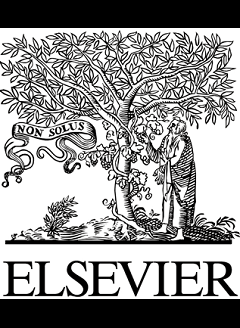دانلود رایگان مقاله بررسی وفاداری مصرف کنندگان قدیمی نسبت به برند های قدیمی در خرده فروشی مواد غذایی – سال 2020


مشخصات مقاله:
عنوان فارسی مقاله:
بررسی وفاداری مصرف کنندگان قدیمی نسبت به برند های قدیمی در خرده فروشی مواد غذایی
عنوان انگلیسی مقاله:
Examining older consumers’ loyalty towards older brands in grocery retailing
کلمات کلیدی مقاله:
مصرف کنندگان قدیمی، انتخاب برند، وفاداری به برند
کلمات کلیدی انگلیسی:
Older consumers – Brand choice – Brand loyalty
مناسب برای رشته های دانشگاهی زیر:
مدیریت
مناسب برای گرایش های دانشگاهی زیر:
بازاریابی
وضعیت مقاله انگلیسی و ترجمه:
مقاله انگلیسی را میتوانید به صورت رایگان با فرمت PDF با کلیک بر روی دکمه آبی، دانلود نمایید. برای ثبت سفارش ترجمه نیز روی دکلمه قرمز رنگ کلیک نمایید. سفارش ترجمه نیازمند زمان بوده و ترجمه این مقاله آماده نمیباشد و پس از اتمام ترجمه، فایل ورد تایپ شده قابل دانلود خواهد بود.
فهرست مطالب:
Abstract
Keywords
1. Introduction
2. Background to the research
2.1. Brand buying behaviour of older consumers
2.2. Possible underlying mechanisms for older consumers loyalty
2.2.1. Satisficing tendencies
2.2.2. Early learned brands are more memorable
2.2.3. Attachment and nostalgia towards familiar brands
2.2.4. Habit formation
2.3. Age segmentation as a marketing strategy
3. Research questions
4. Data and method
4.1. Panel data
4.2. Identifying the relative age of brands and consumers
4.3. Analysis
5. Results and discussion: comparing older consumers’ loyalties across brands
5.1. Older consumers do not purchase older brands more frequently
5.2. Older consumers do not principally buy older brands
6. Results and discussion: comparing user profiles for older and newer brands
7. Implications and conclusions
8. Limitations and future research
Acknowledgement
Appendix.
References
قسمتی از مقاله انگلیسی:
1. Introduction Declines in fertility and mortality rates underpin the demographic shift to an aging global population. In the United States, it is predicted that by 2030 the population aged 65+ years will outnumber children under 18 years, and one in five residents will be at retirement age (Bureau, 2018). The potential financial gains from selling to this older segment has consequently captured the attention of marketers. Age is one of the basic classification variables for segmenting consumers, a practice that has been common among marketers for decades (Kennedy et al., 2013; Smith, 1956). Brands have attempted to explicitly appeal to the mature market, some with apparent success (e.g., “Welcome to Life After 50” by SunLife UK), others less so (e.g., Crest removed mentions of “selected for ages 50 plus” from their dental products). Despite the growth and importance of the older consumer segment, limited research has examined the buying habits of this cohort to identify how it might be dis/similar to younger cohorts. Studies do show that older consumers tend to consider and/or purchase fewer brands (see Lambert-pandraud and Laurent, 2010a for a summary). Of the brands bought, there is also some evidence that older consumers seem to prefer long-established (older) brands over newer brands (Lambert-pandraud and Laurent, 2010a, 2010b). Considering that older consumers have extended recurring exposure to long-established brands, either through direct purchase experience and/or an accumulation of advertising exposures, it is reasonable to assume some form of loyalty will prevail towards those more familiar brands over newer ones. This suggests that older brands have an inherent advantage to retain this segment of customers when faced with new brands entering the market.


